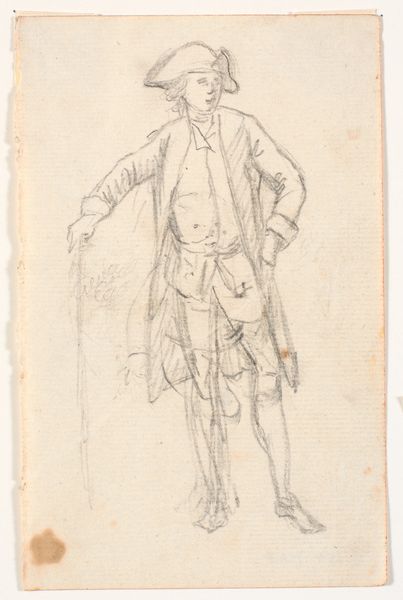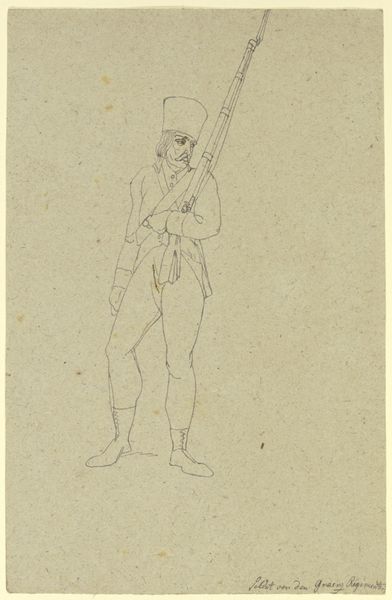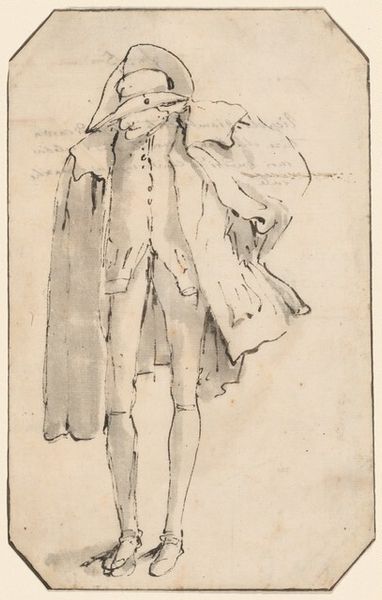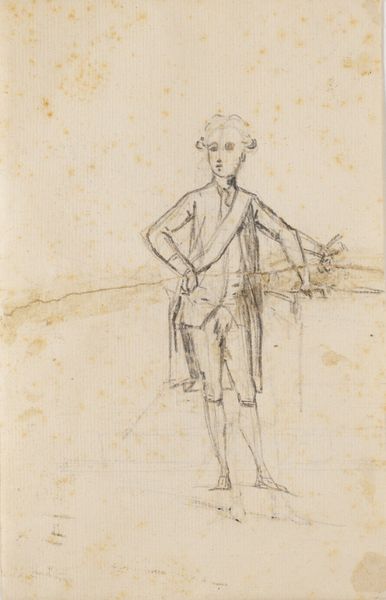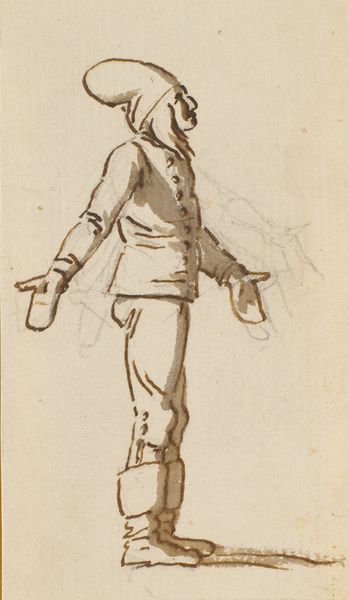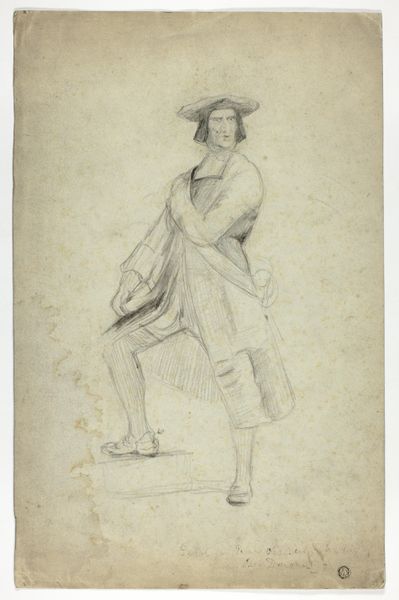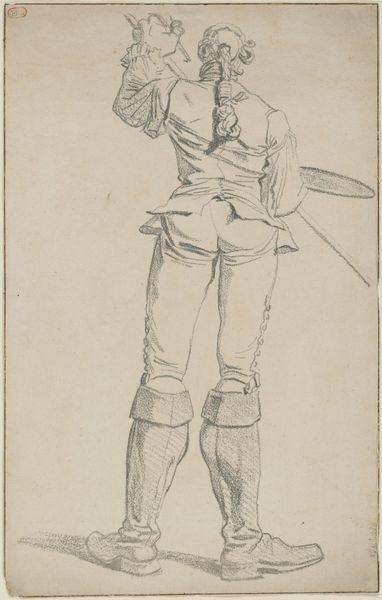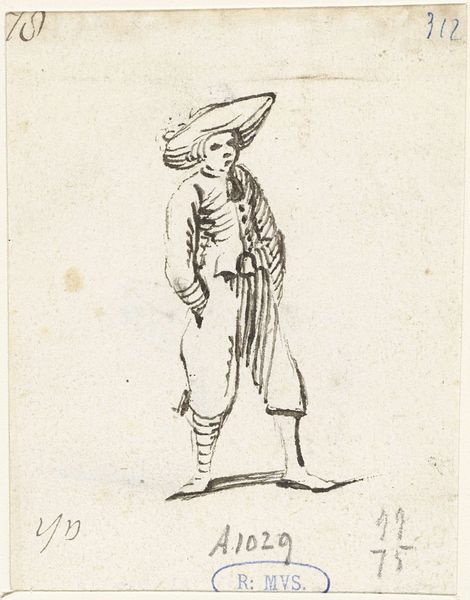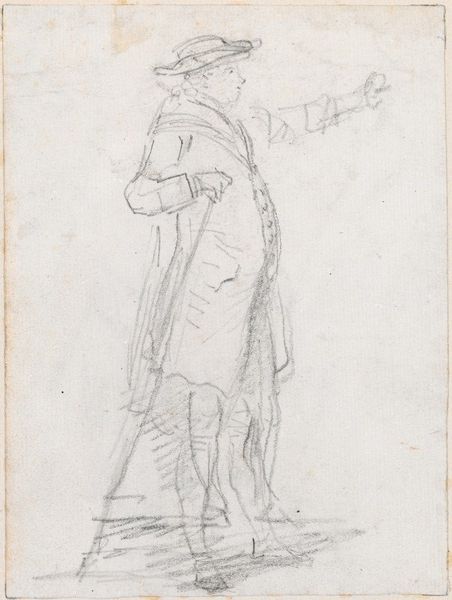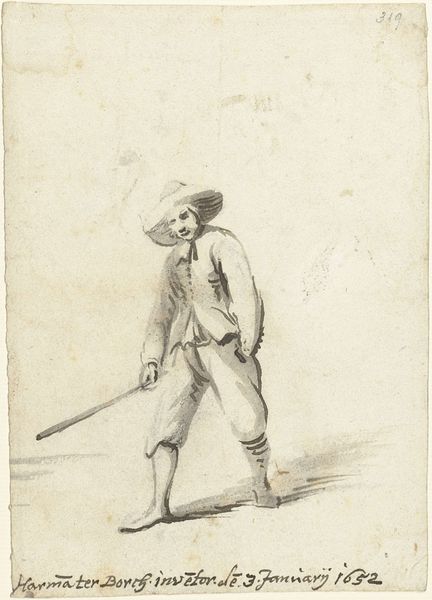
drawing, ink, pen
#
portrait
#
drawing
#
baroque
#
figuration
#
ink
#
line
#
pen
#
genre-painting
Dimensions: height 106 mm, width 80 mm
Copyright: Rijks Museum: Open Domain
Curator: Here we have a drawing attributed to Harmen ter Borch, possibly from 1652, titled "Visser met een hengel en een tas, naar rechts," or "Fisherman with a Rod and a Bag, facing right". It's a pen and ink sketch currently held in the Rijksmuseum collection. Editor: It feels incredibly immediate, almost a snapshot of a moment. The linework is so sparse yet captures the figure so effectively. There's a raw energy. Curator: Exactly. Note how ter Borch utilizes line weight. The thicker lines define the contours, creating volume. Observe the economy of detail. A few strokes delineate his clothing and facial features. It speaks volumes about his draughtsmanship, a deliberate minimalism, I would argue. Editor: I am really taken by how utilitarian the subject is and by what it says about daily life, especially through the humble material of pen and ink. Consider how accessible that medium would have been compared to painting; this fisherman’s labor, however romanticized, is captured with similar immediacy as his gentry subjects. The artist employs the same materials across his work—this makes me question divisions of high and low art. Curator: Intriguing. However, the sketch, rather than focusing solely on representation, functions primarily as an exercise in form. Ter Borch expertly utilizes the negative space, directing the viewer’s attention to the essence of the figure, not simply its function. The bag almost seems like an afterthought in terms of detailing, the rod suggested but absent. Editor: Yet that “afterthought” underscores his working existence! These simple lines aren’t just about aesthetics, they're tied to lived experience, hinting at a broader social narrative of labor and the production of everyday sustenance. Even the relatively unfinished aspect contributes to that, almost as if capturing an activity in motion before it can ever be static. Curator: A valid reading, but perhaps we can also view the work's incompleteness as reflective of an idea in progress? A formal experiment that showcases an understanding of form, a reductive strategy to distill form, the very concept of a fisherman. Editor: I appreciate your thoughts. Seeing both the distillation of form alongside the documentation of the everyday—the labor and lives of ordinary people – makes this sketch particularly compelling. Curator: A compelling point to end our conversation.
Comments
No comments
Be the first to comment and join the conversation on the ultimate creative platform.
